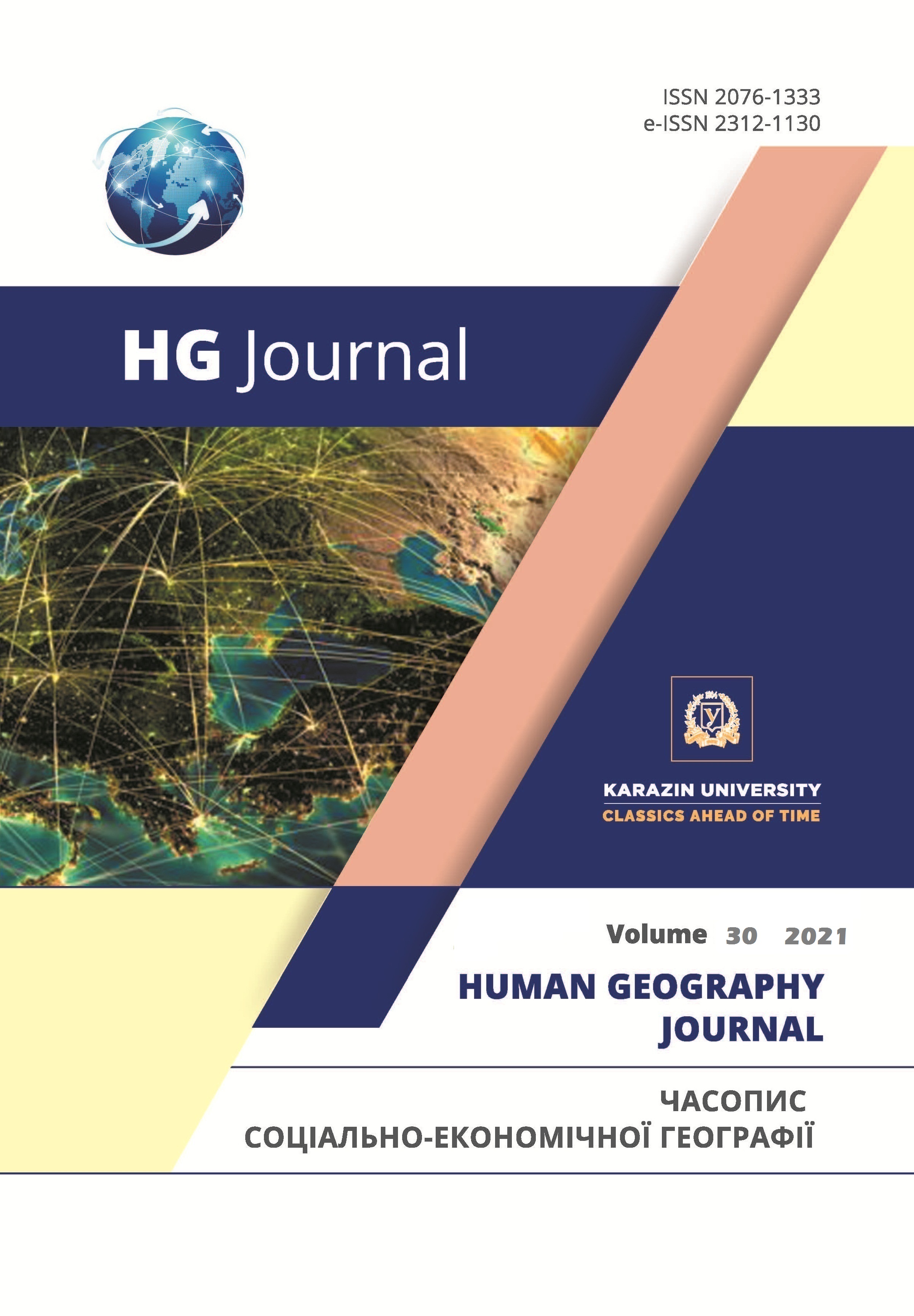Barrier-free tourism as a means of physical recreation for persons with disabilities on the example of the developed active tour «Conquering diseases»
Abstract
This article analyzes the current state of development of barrier-free tourism in the Zhytomyr region, as well as presents a guided tour for blind people. The study clarified the stages of evolution of the concept of «inclusive tourism» and its interpretation by both Ukrainian and foreign scientists, as well as its own definition of this area. The main difference was due to the variety of terms that can be used to describe tourism for people with disabilities. For Ukraine, the most appropriate option is the word «barrier-free», which, unlike «affordable tourism», has no other interpretation. An important aspect when creating a tourist route is to first choose the direction in which the main attention will be paid when including services in the tourist product. According to the fact that in Zhytomyr in 2021 it is planned to actively develop the sports industry and in general the main tourist specialization of the region is aimed at the development of active tourism. It was sports disability tourism that was taken as the basis among other types.
This route is the first in the region, due to the fact that it combines not an ordinary walking tour, but a modified one, which first includes passing a quest-walk for the blind using a smartphone, and then playing various sports. Due to the various services included in the tour, for those who use it, it can serve as a means of rehabilitation through socialization and organized active leisure. Within the Zhytomyr region and the city of Zhytomyr there is a great opportunity to develop this area and attract people with limited mobility, as there are many natural and historical and cultural monuments that can be included in the routes. The main importance of this topic and the development of a tourist route for the blind is that people with disabilities will be able to find like-minded people during the tour and the need to create an environment accessible to all citizens, including people with various disabilities. So, now an important point is the socialization of people with disabilities in the tourist environment.
Downloads
References
Be Accessible. Join Mov (2020). Retrieved from https://www.belab.co.nz/why-accessibility (accessed on 4 November 2020).
Congress on the Creation of an Inclusive and Accessible Community in Asia and the Pacific https://www.accessibletourism.org/resources/takayama_declaration_top-e-fin_171209.pdf.
Darcy, S., & Buhalis, D. (2011). Introduction: from disabled tourists to accessible tourism, Accessible Tourism: Concepts and Issues, pp. 1-20.
Economic impact and travel patterns of Accessible Tourism in Europe. (2014), Brussels. Retrieved from http://ec.europa.eu/DocsRoom/documents/5566/attachments/1/translations/en/renditions/native.
Linderova, I. (2015). Accessible tourism services for disabled visitors in South Bohemia Region. In Proceedings of the 4th Biannual CER Comparative European Research Conference (pp. 33-37). London, United Kingdom: CER.
Pagan, R. (2012). Time allocation in tourism for people with disabilities. Annals of Tourism Research, 39(3), 1514-1537.
Qualitative Research. Retrieved from http://www.elearningcentre.hamk.fi/tko/menetelmat/laadullinen.html (accessed 13.10 2011).
Souca Maria Luiza (2010). Accessible Tourism – The Ignored Opportunity. Annals of Faculty of Economics. University of Oradea, Faculty of Economics, vol. 1(2), pages 1154-1157.
Tourism accessible for all in Europe. Ehical: Barrier Free Tourism. Retrieved December 16, 2016, from www.tourism-review.com/fm485/ethical-barrier-free-tourism.pdf.
UNWTO Secretary-General. Retrieved from https://www.unwto.org.
UNWTO, Declaration on the facilitation of tourist travel (A/RES/578(XVIII) (Astana, Kazakhstan, 2009). Retrieved from http://www2.unwto.org/sites/all/files/docpdf/ares578xviiideclarationfacilitation2009en.pdf.
Anikeeva, O.A., & Anisimova, Yu.A. (2011). Rossiya bez barierov: turizm, dostupnyi dlya vsekh. Servis v Rossii i za rubezhom, 25 (6), 17-21 [іn Russian].
Barna, N.V., & Korotieieva, A.V. (2020). Inklyuzyvno-reabilitatsiynyi turyzm. Kyiv, 125 p. [іn Ukrainian].
Beidyk, O.O., & Topalova, O.I. (2017). Adaptyvnyi turyzm: peredumovy ta perspektyvy rozvytku, lidery Dukhu i Voli: navch. posib. Kherson: OLDI-PLIUS, 402 p. [іn Ukrainian].
Biriuchkov, M.V. (1995). Valentyn Haiui: do 250-richchya vid dnya narodzhennya. Shkilnyi visnyk, 1, 23-45 [іn Ukrainian].
Evseev, S.P., & Aksenova, O.E. (2007). Tekhnologii fizkulturno-sportivnoy deyatelnosti v adaptivnoy fizicheskoy kulture. M.: Sovetskiy sport, 296 p. [іn Russian].
Ofitsiynyi sait Derzhavnoi sluzhby statystyky Ukrainy. Retrieved from http://ukrstat.gov.ua [іn Ukrainian].
Smyrnova, D.B., & Smorodyna, Yu.S. (2013). Bezbariernyi turyzm: osnovni ponyattya, perspektyvy rozvytku. World economy, finances and investments: zb. mater. II Mizhnar. nauk.-pr akt. konfer. Retrieved from http://www.asconf.com/view_arhiv.php?konf=World%20economy,%20finance [іn Ukrainian].
Topalova, O.I. (2016). Suspilno-geografichni peredumovy ta perspektyvy rozvytku adaptyvnoho turyzmu v Ukraini. Candidate’s thesis. Kyiv[іn Ukrainian].
Copyright (c) 2021 Serhii Ulyhanets, Liudmyla Melnyk, Ulyana Shynkarenko

This work is licensed under a Creative Commons Attribution 4.0 International License.




